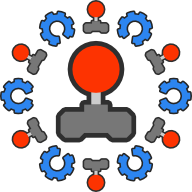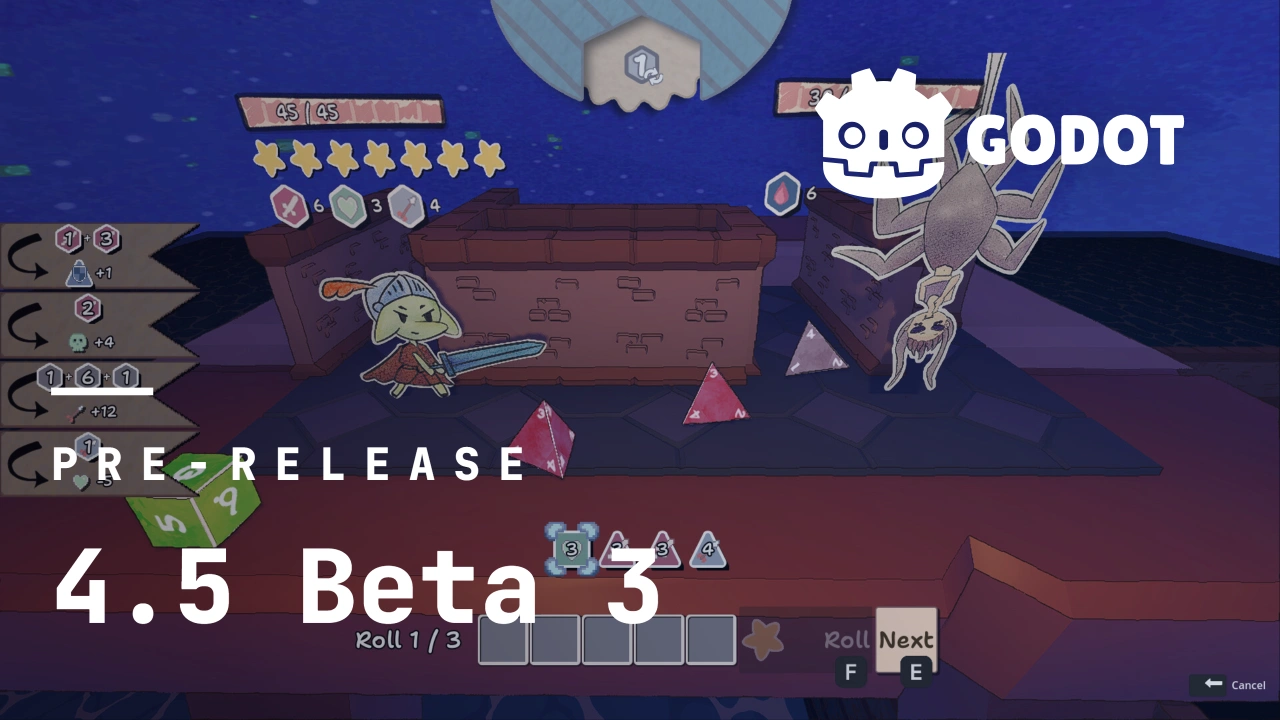Unciv: 4.17.5
Godot Showcase – Dogwalk
Today we want to showcase a very special project. Most of you already know about it since it is really hard to go around any Godot space without finding people excited about Dogwalk. So if somehow you didn’t know about the project or you still haven’t been captivated by their video blogs over at YouTube, you are in for a treat! Julien Kaspar and Simon Thommes from the Blender Studio team tell us about their experience developing their first Godot game: Dogwalk.
The game is already out on Steam, Itch.io, and you can also get the project files with tons of extras from their website.
Can you tell us a little bit about your project?
Julien:
For this year the Blender Studio, which is the in-house art department of the Blender project, decided to focus on smaller short-term projects. We aimed for four months for each of them so I saw the unique chance to pitch a tiny game project. And the scope really had to be tiny to be able to pull off a game for the first time.
Dogwalk is a short, wholesome interactive story about a dog and a kid decorating a snowman together. One big focus was on wordless storytelling through reactive gameplay.
It’s not strictly about fun or overcoming challenges. It’s about allowing the player to shape and experience the relationship between the two characters, simply by constraining the player to a small set of mechanics and have the game react to what they do with that.
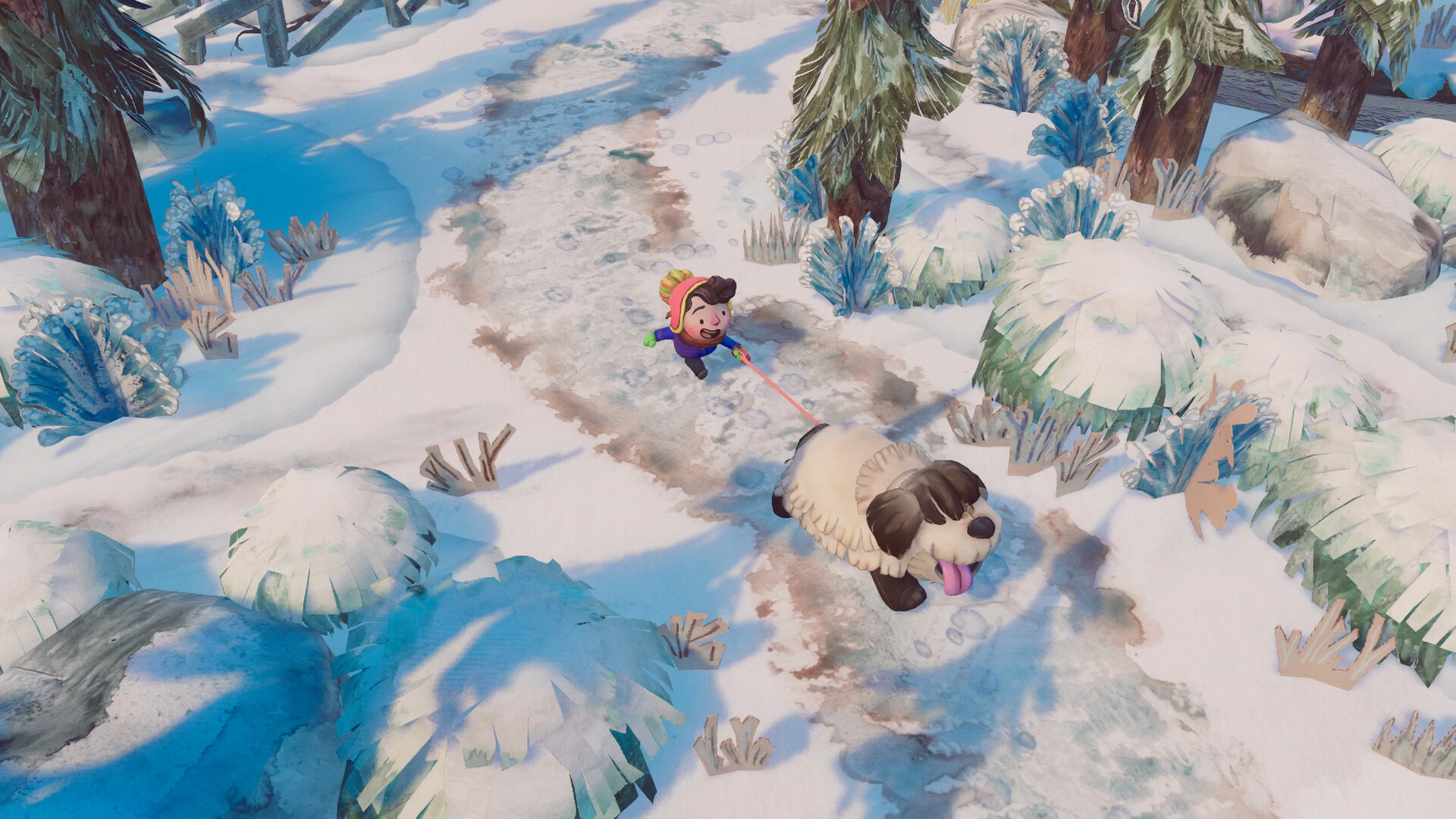
Why did you pick Godot to develop this project?
Julien:
One of our primary missions (and constraints) is that we demonstrate how people can make entire movies by only using free open-source software. We call these “Open Projects” since we also licence them as open source and make the sources available.
So for a game project it seemed natural to use Godot for it. Personally I’m a fan of the engine and project, and was quite excited to be able to use it for a professional project in a team.
Every one of our projects also comes with some Blender-specific development targets. In this case we took a closer look at the export and import of glTF animations and assets. We created a pipeline for ourselves to stress-test the interoperability between Blender and Godot as much as our production scope allowed us.
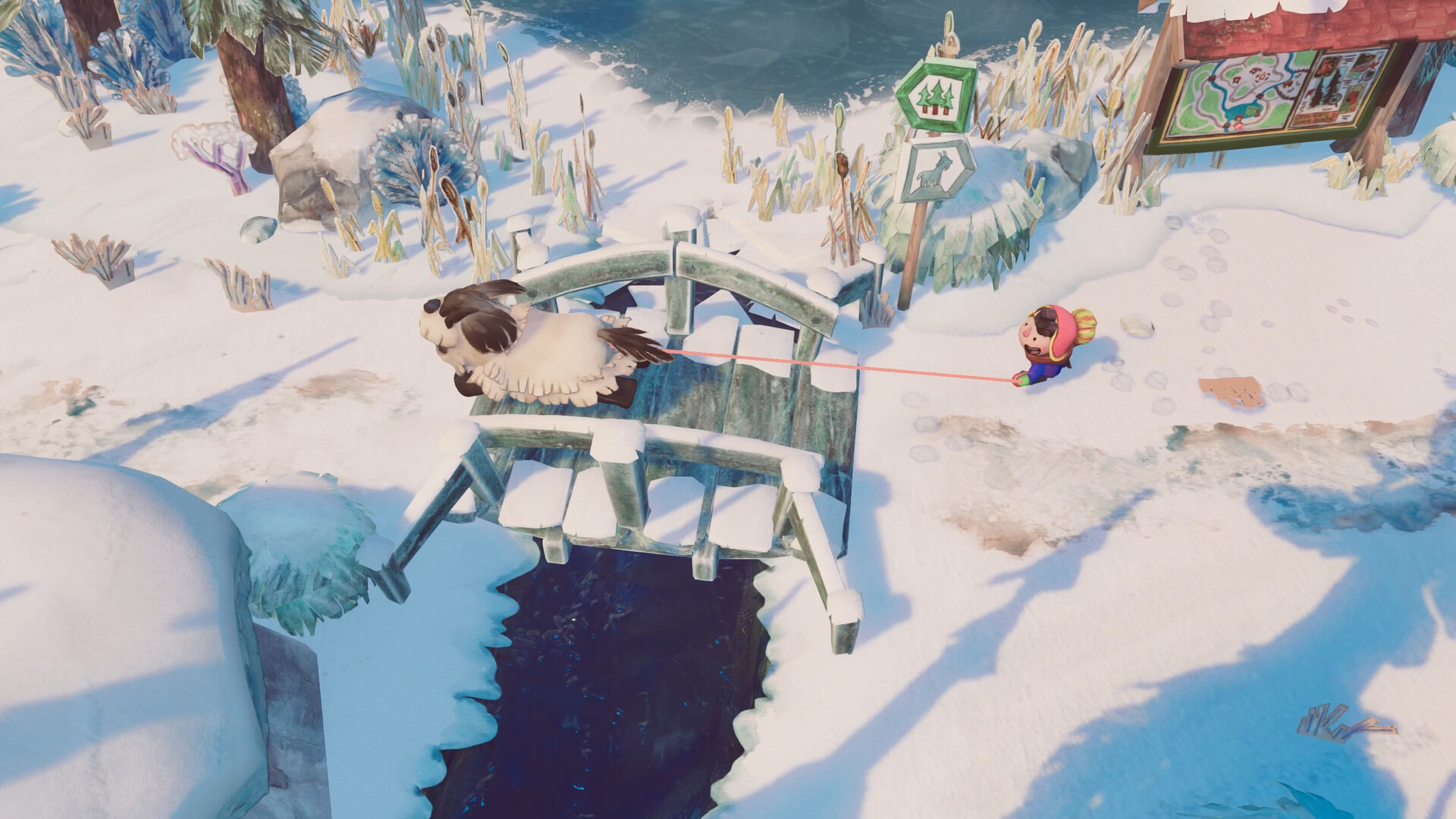
How did the project compare with your past experiences as a studio who usually does animation movies rather than games?
Julien:
Pretty different. One big change is the shift from storyboarding/editorial to game prototyping/playtesting. In our film productions the story artists and animators would typically helm the project, but in this case I was doing it with an emphasis on development and design. It put us in very different shoes.
The animation and rigging workflow is also very different. Animators don’t have the usual fine level of control and instead need to playtest the game to see the animations applied in action. We were also not used to rigging for export and game engines in mind, so we made some mistakes on that side that needed creative problem solving later on.
But the biggest hurdle was to have the entire art team use Git LFS for version control. That was … quite a journey.
How did you find the current export pipeline from Blender to Godot?
Simon:
We were quite impressed immediately with how seamless the base level compatibility was. As an initial test we had built a demo environment in Blender and exported it as one big glTF to throw it in Godot. Everything just worked. That’s definitely nothing to scoff at.
Of course, we had a more refined pipeline setup in mind that would allow us to collaborate and iterate on assets and sets from within Blender.
But the extensible ecosystem of Godot and using glTF made it possible for us to hook up anywhere in the process and inject our own functionality. Coming in from outside, I was really quite surprised how powerful our available options are without a core understanding of how the engine works.
Were there any quirks with the way the material rendering and animations were converted from Blender to Godot?
Simon:
We actually ran into a couple of issues with our stop motion animation style, which apparently seems to not be very common for game animation. So both on the export and the import level there were some parts that made assumptions over keyframe interpolation causing some obscure issues that took quite some investigation. But now those are all resolved.
Since Godot was always our target for rendering, there were some shader features that we didn’t replicate for the preview that we had in Blender. That’s mainly the fake paper thickness, for which we had two separate effects. But since the effects are so subtle, it wasn’t really required for the asset creation process.
We’re also not used to having to make drastic cuts due to performance, coming from usually doing offline rendering. So there were some rendering features that we had to disable and replace with some clever lighting cheats to save the frames.
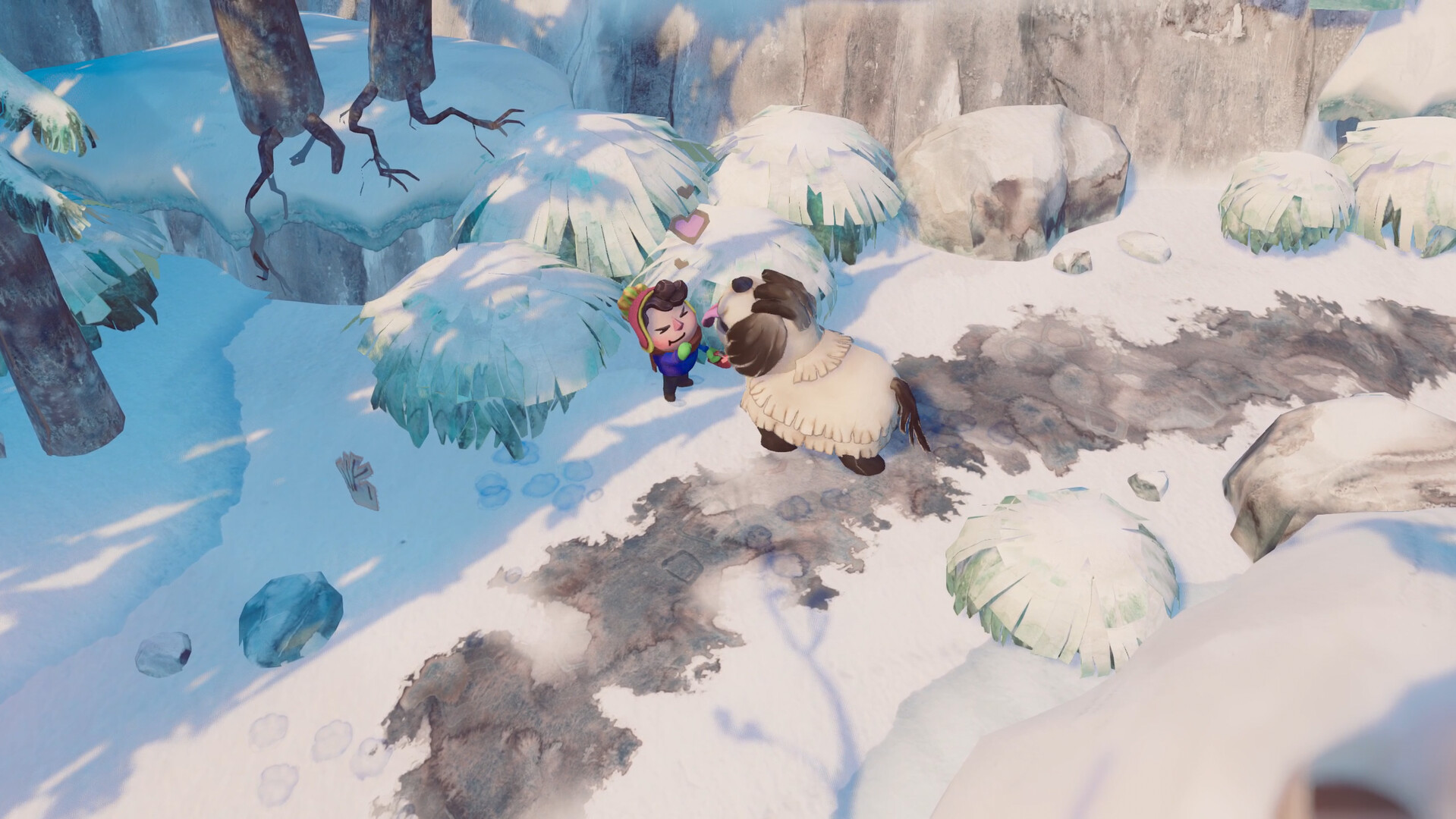
Are there suggestions for improvement in this context?
Simon:
Most of the things we ran into, we reported right away and they have already been fixed. It’s been great to see how actively the Godot community has been responding to the issues we found.
There have been some other more big-picture issues that we ran into when collaborating as a team and using versioning. This mainly relates to UIDs and caching going out of sync.
Since these issues are usually complex and relate to our pipeline and people’s individual systems, these were a bit more tricky to identify and report. Especially with the additional burden of our art team using git for the first time, it wasn’t always clear what were issues that were actually caused by Godot.
I really hope that we can find the time to sit together with some Blender and Godot developers to see what we can collectively take away from these issues and potentially change to make sure collaborating as a team using Blender and Godot is a smooth process.
While making your game, were there any features that were sorely missing in Blender or in Godot?
Julien:
Nothing that couldn’t be added manually or fixed with workarounds.
With one of the main gameplay and visual elements being the leash, sadly there was no Line3D node. But luckily the community had a handy plugin to immediately fill in that gap.
We also ran into some limitations with our animation system, but that will be fixed in the upcoming 4.5 release.
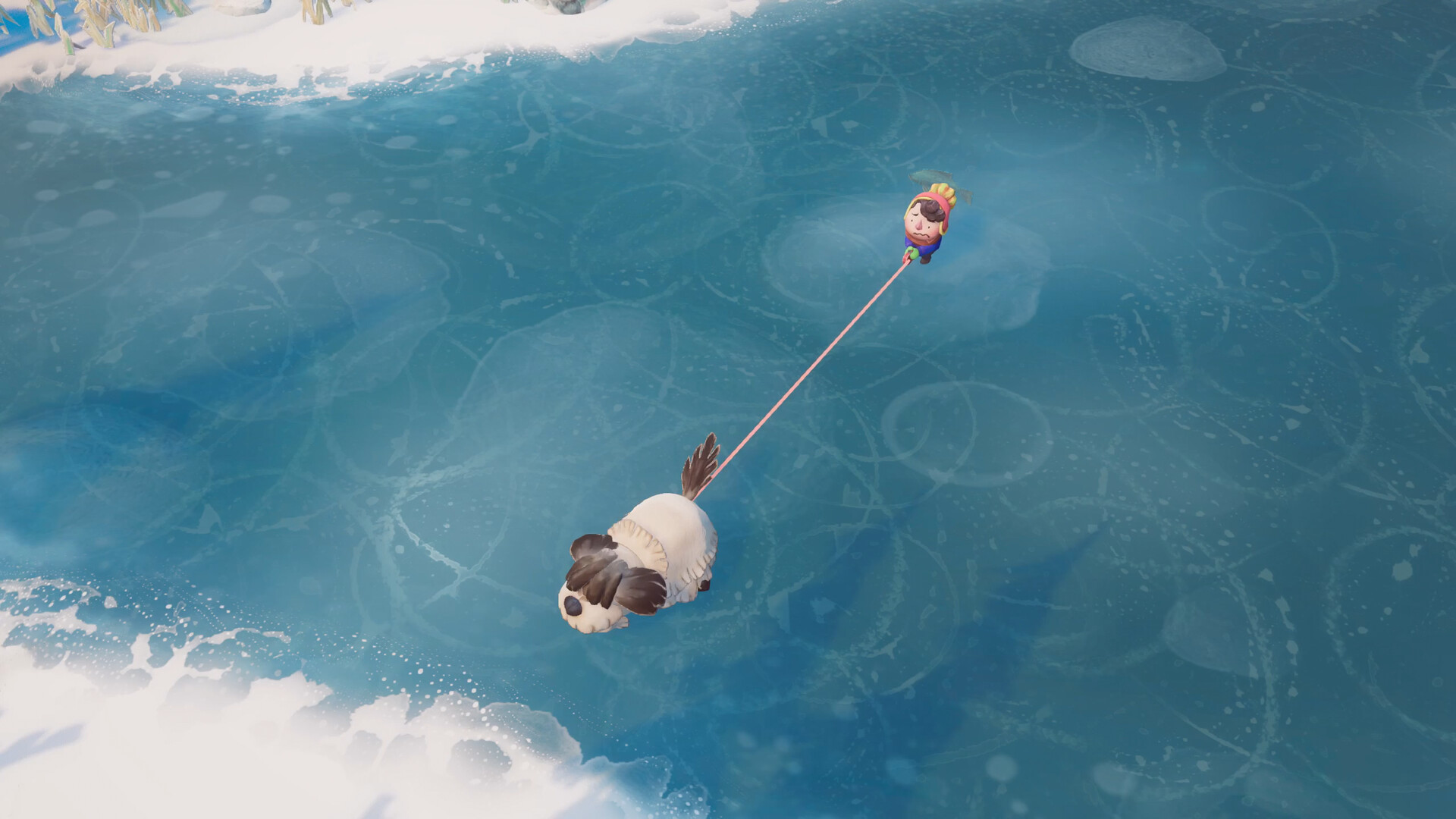
Thank you very much Julien and Simon for taking the time to answer our questions, and we look forward to see what you do next with Godot!
If you want to play Dogwalk, it is free and already out on Steam, and Itch.io. Make sure to get the supporter DLC on Steam, donate via Itch, or subscribe to Blender Studio if you are interested in seeing more projects like this in the future.
Libre Arts: Weekly recap — 13 July 2025
Taisei v1.4.4 Released!
Thrive: Progress Update 07/12/2025
Unciv: 4.17.4
Castle Game Engine: Support for new Tangent node in X3D, with vectors as 4D, better aligned with glTF
Naev 0.12.6
Dev snapshot: Godot 4.5 beta 3
The previous beta snapshot was one week ago, and you mean to tell me another one is here already? Indeed, the community has done a terrific job of reporting regressions and getting fixes integrated in record time! That release was also responsible for the last of the merge exceptions being integrated, so everything from this point forward will be strictly addressing regressions and bugfixes.
Jump to the Downloads section, and give it a spin right now, or continue reading to learn more about improvements in this release. You can also try the Web editor or the Android editor for this release. If you are interested in the latter, please request to join our testing group to get access to pre-release builds.
The cover illustration is from Dice ‘n Goblins, a dungeon-crawling, turn-based RPG where the fate of your goblin in a seemingly endless labyrinth is guided by the roll of the die! You can buy the game on Steam.
Highlights
For an overview of what’s new overall in Godot 4.5, have a look at the highlights for 4.5 beta 1, which cover a lot of the changes. This blog post only covers the changes between beta 2 and beta 3. This section covers the most relevant changes made since the beta 2 snapshot, which are largely regression fixes:
- 2D: Fix smoothed camera position with limits (GH-108200).
- Animation: Fix animation keying not working with toggleable inspector sections (GH-107919).
- Audio: Fix audio name doesn’t appear in exports of child classes of
AudioStream(GH-107598). - C#: Fix crash in C# bindings generator with bad enum documentation XML (GH-108262).
- Core: Fix typed collections using same reference across scene instances (GH-108216).
- Export: Update DotNet iOS export process (GH-100187).
- GDScript: Autocompletion: Fix type resolution when assigning
Variant(GH-92584). - GDScript: Fix crash when using a modulo operator between a float and an integer (GH-101536).
- GDScript: Improve GDScript editor support for global enums (GH-102186).
- GDScript: LSP: Don’t poll during editor setup (GH-108140).
- Particles: Fix floating point precision errors when setting particle trail length (GH-107568).
- Particles: Fix particles resetting properties when emitting is toggled (GH-107915).
- Physics: Jolt: wake up a soft body when its transform changes (GH-108094).
- Rendering: FTI: Add reset on setting
top_level(GH-108112). - Rendering: Metal: Use image atomic operations on supported Apple hardware (GH-108028).
Changelog
37 contributors submitted 56 fixes for this release. See our interactive changelog for the complete list of changes since the previous 4.5-beta2 snapshot.
This release is built from commit 4d1f26e1f.
Downloads
Godot is downloading…
Godot exists thanks to donations from people like you. Help us continue our work:
Standard build includes support for GDScript and GDExtension.
.NET build (marked as mono) includes support for C#, as well as GDScript and GDExtension.
While engine maintainers try their best to ensure that each preview snapshot and release candidate is stable, this is by definition a pre-release piece of software. Be sure to make frequent backups, or use a version control system such as Git, to preserve your projects in case of corruption or data loss.
Known issues
During the beta stage, we focus on solving both regressions (i.e. something that worked in a previous release is now broken) and significant new bugs introduced by new features. You can have a look at our current list of regressions and significant issues which we aim to address before releasing 4.5. This list is dynamic and will be updated if we discover new showstopping issues after more users start testing the beta snapshots.
With every release, we accept that there are going to be various issues which have already been reported but haven’t been fixed yet. See the GitHub issue tracker for a complete list of known bugs.
- The Android Library infrastructure we’ve been using has been sunset, so those components are currently unavailable.
Bug reports
As a tester, we encourage you to open bug reports if you experience issues with this release. Please check the existing issues on GitHub first, using the search function with relevant keywords, to ensure that the bug you experience is not already known.
In particular, any change that would cause a regression in your projects is very important to report (e.g. if something that worked fine in previous 4.x releases, but no longer works in this snapshot).
Support
Godot is a non-profit, open source game engine developed by hundreds of contributors on their free time, as well as a handful of part or full-time developers hired thanks to generous donations from the Godot community. A big thank you to everyone who has contributed their time or their financial support to the project!
If you’d like to support the project financially and help us secure our future hires, you can do so using the Godot Development Fund platform managed by Godot Foundation. There are also several alternative ways to donate which you may find more suitable.
